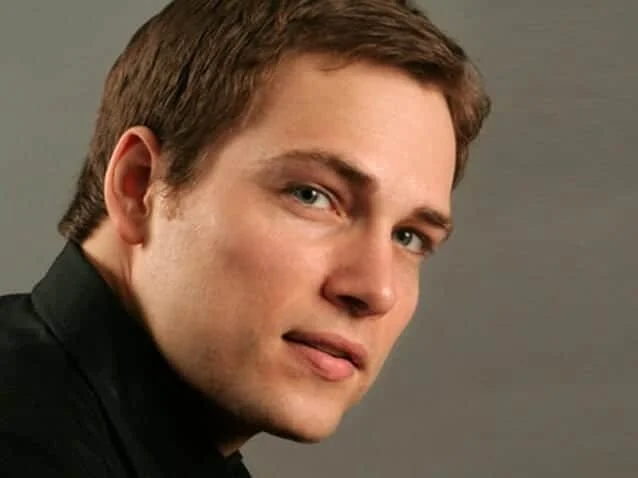INTERVIEW: Jeremy Holt and George Schall talk MADE IN KOREA
By Keigen Rea — Made in Korea was my favorite comic series of 2021. I’m a sucker for stories that investigate artificial intelligences in general, and this series plays with those themes in a way that feels more creative and meaningful than I’ve experienced In quite a while, all while being one of the most gorgeous comics I’ve ever read.
What follows are some questions I had for artist George Schall and writer Jeremy Holt about their work on the series, the collected trade of which is out this Wednesday, Jan. 26.
INTERVIEW: Jeremy Holt and George Schall talk MADE IN KOREA
KEIGEN REA: Made in Korea stands out to me from a lot of AI focused stories by not showing any interest in the idea of whether Jesse is alive or not, opting to just treat her as such. How did it feel for both of you to bypass that in favor of themes regarding identity and autonomy, among others?
JEREMY HOLT: That’s in interesting observation. I guess I never really thought to focus on the idea of whether Jesse is alive or not. That’s not terribly interesting or compelling. What is worth exploring is the question: What makes us human? I think that’s a universal conflict we can all relate to and is made more interesting when our protagonist is viewed as anything but by the people around her.
GEORGE SCHALL: I think the idea of synthetic beings being considered or not lifeforms has been discussed a lot in sci-fi in the last century, and though I love to consume that kind of story I definitely prefer to focus my work more on stories regarding the aspects of human nature. Let's say I'm more interested in asking what makes someone a person, or from where does our necessity for expression and uniqueness come from, and is that what makes us "people"? Besides that, I guess identity was very much a strong theme in both our lives (as two gender non-conforming people) as we were working on this book, so it was very natural that it steered towards that direction.
KEIGEN: The narrative of the comic has so much to do with life, but much of the execution lies with the way the art is able to really push those emotions. In the early issues, though, many of the settings, such as the school and library, are primarily neutral colors. George, was it difficult to find ways to make everything look alive in those settings? And how did you approach that work?
GEORGE: We really wanted for both settings of the story to contrast a lot, because there's such a big tonal shift in the book once we leave Texas. We needed a false sense of security from the mundane life in the suburbs, so I kept some small futuristic designs here and there but nothing that would take the reader out of the slice-of-life aspect of that part. I was definitely a bit afraid of having those early parts looking too boring. But I also knew that the script was good enough to hold readers' attention until things blew off, so I focused way more on character acting, and I think it was the right decision.
KEIGEN: The most vibrant colors in the series fill the page when Jesse reaches Seoul. Using a giant city to depict such vibrant life is a fascinating, and wonderful choice to me. What decisions for both of you went into making that setting so visually different from the rest of the book?
JEREMY: All credit goes to George on that one. I provided very few references for the Seoul sequences. They brought that aspect of the story to life on the page.
GEORGE: Well, things really take off at that moment in the story. There's no space for nuance anymore, there's no going back for our characters at that point. And also, it's a new place, as vibrant and exciting as it is dangerous for Jesse, emotions are all over the place...So yeah, at that point I just unleashed all my cyberpunk art repertoire that I kept hidden in the early pages of the book and let the visuals interfere more in the storytelling.
KEIGEN: Jeremy, Jesse is mostly depicted as a child in the series, but makes almost all of her own decisions, and has great control over her life. What made it so important to depict Jesse in this way? Why was Jesse the character you wanted to use to tell this story?
JEREMY: As a true AI system with an evolving consciousness, Jesse was always going to make her own decisions from the start. Her mind develops at an accelerated rate. By the end of the first week of her existence, she’s already aged beyond the body that she’s essentially trapped within. I wanted to focus on the topic of trans-racial adoption from all angles, while also making it engaging for the reader by filtering those conflicts through the lens of science-fiction.
KEIGEN: Now that the series is collected, how would you each like it to be remembered?
JEREMY: I’d love it if the eventually circulates through school libraries, and maybe even gets discussed in a college course. That would be pretty cool.
GEORGE: Many queer readers have expressed a lot of love for this comic, and honestly I would love to see more mainstream comics exploring gender identity as a theme. Hopefully we're just a couple from many putting an effort towards that goal, and we can see more of it happening in years to come.
George Schall.
Jeremy Holt.
Read more interviews with comics creators!
Keigen Rea has emerged from his hiatus, just as tired as ever. Who knows what is coming, but whatever it is, it will involve more school probably.













